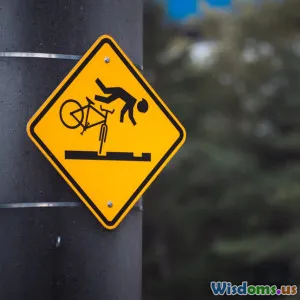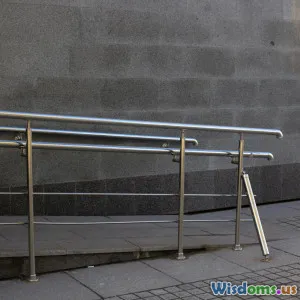
Ten Surprising Ways Pedestrian Zones Boost Local Businesses
10 min read Discover ten unexpected ways pedestrian zones uplift local businesses and transform urban economies. (0 Reviews)
Ten Surprising Ways Pedestrian Zones Boost Local Businesses
Introduction
Imagine a bustling city center where storefronts thrive, streets buzz with friendly chatter, and people linger leisurely without the nagging noise and rush of cars. These pedestrian zones—areas dedicated exclusively to foot traffic—are becoming urban game-changers across the globe. Beyond aesthetics or traffic safety, pedestrian zones provide a wealth of economic advantages to local businesses, often in ways that surprise city planners and entrepreneurs alike.
So, what exactly makes pedestrian zones such powerhouses for unlocking commercial potential? This article dives deep into ten unexpected yet potent ways pedestrian zones boost local businesses. Armed with data, real-world insights, and examples from thriving cities, you’ll gain a new appreciation for these car-free havens—and maybe some inspiration to support or champion pedestrian projects in your community.
1. Dramatic Increase in Foot Traffic
At the most basic level, pedestrian zones remove cars, creating open, accessible spaces where people naturally gravitate. Without cars zooming by, pedestrians feel safer and more comfortable. Cities like Copenhagen have documented foot traffic increases up to 30-50% in pedestrianized areas such as Strøget Street—the longest pedestrian street in Europe.
This elevated footfall translates directly into more potential customers passing storefronts, enhancing exposure for local shops and eateries while encouraging spontaneous visits. A vibrant street full of pedestrians simply invites browsing, sampling, and impulse purchasing—a boon for small businesses.
2. Enhanced Customer Experience and Longer Visits
Pedestrian zones foster a relaxed, leisurely environment. Studies from urbanist Jan Gehl’s firm show that people spend twice as much time in well-designed pedestrian spaces compared to busy streets congested with vehicles. This longer dwell time often correlates with higher spending.
Without exhaust fumes or noise, businesses can set tables outside, host sidewalk sales, or organize live street performances. Such ambience enriches the shopping experience, keeping customers in town longer and encouraging them to explore multiple stores.
Take Ghent, Belgium: a pedestrian zone with cafés and markets has boosted client satisfaction and repeat visits, creating a friendly urban village feeling that locals and tourists love.
3. Increase in Sales and Revenue
Increased foot traffic and longer visits naturally increase sales. A landmark study from New York’s Economic Development Corporation analyzing the pedestrianization of Times Square revealed a 14-20% rise in retail sales for businesses within the zone compared to prior periods.
Similar results can be seen in cities like Melbourne and Barcelona, where restaurants, boutiques, and specialty shops enjoy measurable year-on-year revenue growth post pedestrian-zone implementation. This financial boost confirms these urban spaces do more than simply feel good—they improve the bottom line.
4. Rising Property and Rental Values
As commercial viability surges, property owners often see rising property values. Retail and commercial spaces within pedestrian zones command higher rental rates because of better foot traffic and visibility.
For example, in London’s Carnaby Street, the pedestrian-only status has made the area a prized retail hotspot, leading to increased rents—sometimes by over 20%—as landlords recognize the premium shoppers place on car-free streets.
Consequently, well maintained pedestrian zones can revitalize formerly neglected districts, turning underperforming real estate into valuable assets.
5. Support for Small and Independent Businesses
Pedestrian zones level the playing field for smaller businesses by increasing their exposure without costly advertising. Pedestrianized streets are more likely to feature a diverse variety of independent shops and cafes because of the community atmosphere and affordable spaces.
For instance, in Freiburg, Germany, local authorities incentivized pedestrian zone expansions to encourage small-scale artisans and independent retailers, resulting in a 40% rise in local entrepreneurship and a unique shopping environment less dominated by chains.
6. Opportunities for Events and Community Engagement
Car-free streets provide perfect venues for markets, festivals, performances, and pop-up shops. These community events attract crowds and generate publicity that local businesses can leverage.
Take the example of Florence, Italy, where pedestrian piazzas host weekly farmer’s markets drawing thousands. These events foster community spirit while promoting local products and manufacturers, effectively delivering free advertising and boosting sales.
7. Improved Health and Wellbeing Drives Consumer Positivity
Cleaner air, less noise pollution, and greater physical activity contribute to improved health and wellbeing of shoppers. Healthier, happier consumers tend to spend more time and money locally.
Studies from Stockholm show that pedestrian zones contribute to a measurable decline in urban pollution-related ailments. This not only improves overall urban life quality but enhances local business patronage as people prefer healthier, more enjoyable commercial environments.
8. Environmental Sustainability As a Selling Point
Businesses located in pedestrian zones can market their alignment with sustainability, appealing to eco-conscious customers. A 2022 Nielsen survey found that 73% of millennials prefer shopping in green and environmentally responsible locations.
Retailers and cafés within pedestrian zones often emphasize eco-friendly practices, leveraging their location’s benefits to grow a loyal, environmentally aware customer base.
9. Better Accessibility for Tourists and Locals Alike
Pedestrian zones are often designed with accessibility in mind—smooth pavements, seating, wayfinding—and integrated with public transportation hubs. This ease of access encourages more people to visit, particularly tourists who value walkability and a sense of place.
Take Venice’s pedestrian streets, which delight visitors with picturesque walking routes fully devoid of traffic jams—these enhance visitors’ shopping experiences immensely and support local artisans.
10. Encouragement of Innovation in Retail and Service Offerings
With pedestrian zones acting as dynamic and social hubs, businesses often innovate to captivate foot traffic, introducing interactive displays, outdoor seating innovations, and experiential retail elements.
In Portland, Oregon, a pilot pedestrian plaza saw local shops introducing live entertainment and interactive pop-ups turning shopping into an event. This experimentation keeps the retail environment fresh, attracting customers eager for new experiences and driving repeat business.
Conclusion
Pedestrian zones are far more than pedestrian safety measures—they’re vibrant economic engines. From lifting foot traffic and boosting sales to fostering community connection and enhancing environmental sustainability, these car-free spaces deliver an impressive mix of benefits that directly uplift local businesses.
For cities grappling with urban challenges, pedestrianization offers a strategic approach to revitalizing downtowns, supporting small businesses, and cultivating healthy, prosperous communities. Recognizing these ten surprising ways pedestrian zones help local economies can inspire policymakers, entrepreneurs, and citizens to advocate confidently for walkable streets.
By stepping away from cars and stepping up the pedestrian experience, cities enrich visitors’ journeys and push their commerce to new heights. Could your community be next?
References
- New York Economic Development Corporation, "The Impact of Pedestrianization on Local Retail Shops",
- City of Copenhagen Foot Traffic Surveys, 2021
- Jan Gehl Architects, "Public Spaces and Urban Life," 2019
- Nielsen Sustainability Consumer Survey, 2022
- Florence Municipality Market Statistics, 2023
- London Carnaby Street Rent Analysis, 2020
- Freiburg Economic Development Report, 2022
This article seeks to empower readers with evidence-based insights on pedestrian zones’ economic advantages, sparking thoughtful urban transformations.
Rate the Post
User Reviews
Popular Posts


















